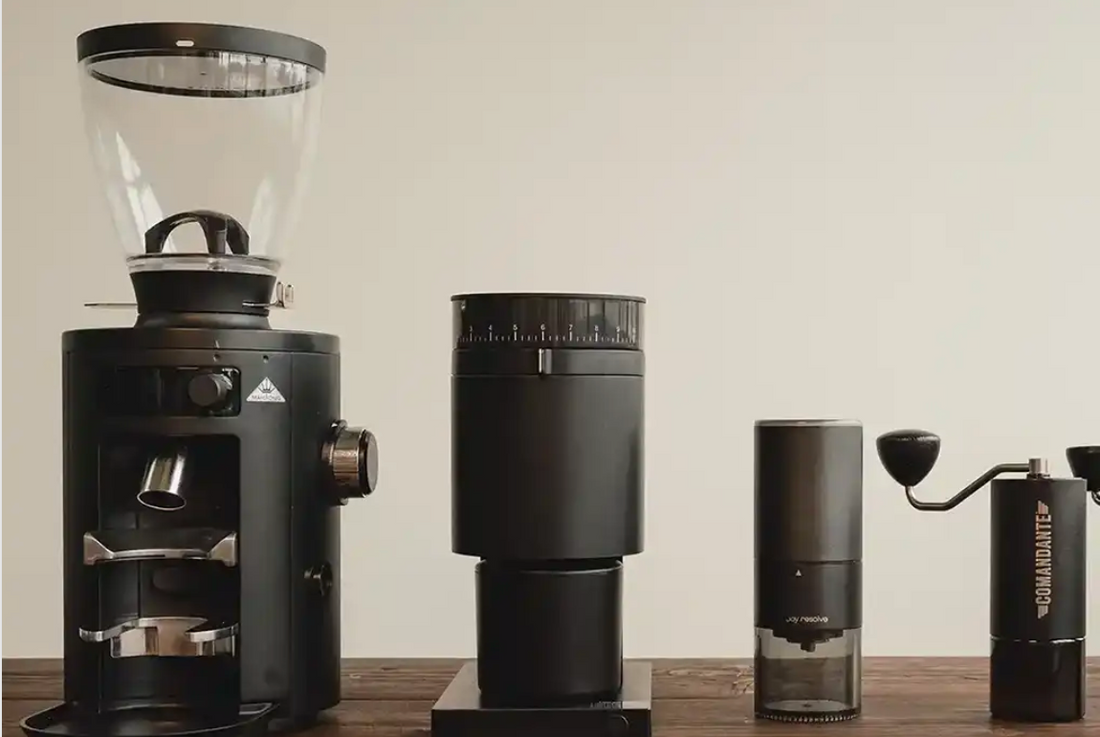
Finding the Right Grinder (Made Simple)
Share

The other day, I was helping a friend pick out a grinder for her new and improved coffee station. We already got her hooked with our beans (mission accomplished), and now she’s going all in with pour-overs, scale, timer… you name it.
It’s funny, isn’t it? Something as simple and enjoyable as coffee can turn into this wonderfully technical rabbit hole. But honestly, that’s one of the beauties of coffee, it can be as simple or as complicated as you want it to be.
Anyway, back to the story.
She came into the roastery, and we started looking at grinder options. That’s when it hit me: choosing the right grinder is no easy task. So, I thought I’d share the basics with you too.
Step 1: Think about size
Are you grinding for just yourself? For two? Three?
The golden rule is to grind just what you’re about to brew. Freshly ground + freshly roasted is always the best combo.
Step 2: Blade vs. Burr
- Blade grinders work like tiny blenders. They’re fast and affordable, but chop unevenly, leaving you with a mix of fine dust and chunky bits. That results in uneven flavours in your cup.
- Burr grinders crush the beans evenly between two burrs (either flat or conical). That consistency is what unlocks the flavours hiding in your beans.
Plastic, Ceramic or Metal Burrs?
• Plastic burrs: Just skip them. They break easily, often have weak (and noisy!) motors, and take forever to grind.
• Ceramic burrs: Stay sharper longer, run cooler (no risk of “cooking” the beans), and are great for precision brewing. They can be a bit slower, and if dropped, they might crack. Not my personal favourite.
• Metal burrs: Usually stainless steel. They grind faster, are very durable, and most home brewers love them for their speed and reliability.
Step 3: Flat vs. Conical Burrs
- Flat burrs: Extremely precise, giving a uniform grind. Loved by pros for espresso.
- Conical burrs: Quieter, less messy, and usually more budget-friendly for home brewers.
Why This Matters
The quality of your brewed coffee is greatly influenced by the quality and uniformity of your grind. In fact, you can usually offset a less expensive espresso machine or brewer with an exceptional grinder, but not the other way around.
Budget & Weight
- Manual burr grinders: Lightweight, portable, usually under $100 but there are some expensive ones over $250 as well. They take a bit longer (and a little elbow grease), but give you excellent control.
- Electric burr grinders: Faster, more consistent, and available at a range of price points. They’re heavier, but if you brew every day for yourself (or your family), the convenience is worth it.
If you’re thinking about upgrading your grinder, I hope this makes the decision easier. Remember: great coffee isn’t just brewed… it’s crafted.
Brew Boldly, Life Fully
Adriana & the Crickle Creek Coffee Team
